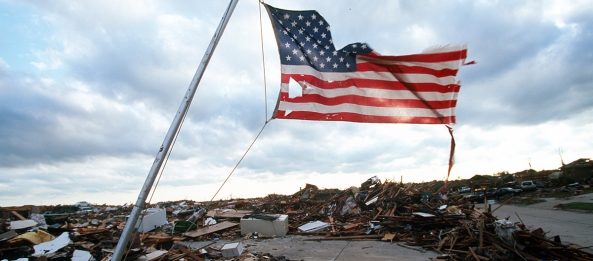[NOTE: Mouse over or click on individual photos for larger versions and more info. Also, I’ve created an interactive map of the outbreak to make it easier to follow along. It includes every known tornado track as well as every fatality, so feel free to zoom and pan around or navigate via the menu on the left side of the screen.]
While this article was meant to be read as one piece, I realize it can be a bit overwhelming. To that end, I’ve included a table of contents that should hopefully make navigation a little easier:
- Niles Park Plaza
- The Elevated Mixed Layer
- The Prelude
- Trouble Brewing
- Rush Cove, ON F2
- A Wicked Breeze
- Where the Hell Is This Thing?
- Hopeville, ON F2
- Corbetton, ON F3
- Grand Valley, ON F4
- Lisle, ON F2
- Barrie, ON F4
- Tornado Watch #211
- Albion, PA F4
- Mesopotamia, OH F3
- Linesville, PA F2
- Atlantic, PA F4
- Corry, PA F4
- Saegertown, PA F3
- Centerville, PA F3
- Wagner Lake, ON F2
- Reaboro, ON F2
- Alma, ON F3
- Ida, ON F2
- Rice Lake, ON F3
- The Spark Arrives
- Niles, OH-Wheatland, PA F5
- Tionesta, PA F4
- Johnstown, OH F3
- Tidioute, PA F3
- Undocumented Tornadoes
- New Waterford, OH F3
- Moshannon State Forest F4
- Dotter, PA F2
- Kane, PA F4
- Beaver Falls, PA F3
- Elimsport, PA F4
- Drums, PA F1
Niles Park Plaza
The sky grows dark and threatening as swollen storm clouds roll in from the west, extinguishing the late-afternoon sun. Shade trees bend and creak in protest, their broad canopies quivering in the wind. Rain comes in fits and starts, spattering against the windshield in fat, heavy droplets.
None of it matters to Ronnie Grant. After one of the proudest and happiest days of his life, a few thundershowers won’t dampen his spirits. His daughter has just graduated high school — in a few months, she’ll begin her scholarship at a prestigious university halfway across the country. In the meantime, he and his wife Jill are heading out to celebrate at their favorite local restaurant.
A lineman for the utility company, Ronnie has lived in Northeast Ohio all his life. He’s driven this stretch of U.S. 422 so many times he can do it in his sleep, arcing north and west from Girard through the outskirts of Niles. As he crests a hill overlooking a commercial strip on the city’s northeast side, the gossamer veil of rain begins to lift.
His wife gasps and stiffens in her seat. He opens his mouth to speak but the words catch in his throat. Something is terribly wrong, and suddenly the whole world is unmoored from the flow of time. Seconds linger like minutes, unfolding in a stilted, stop-motion fashion that only adds to the deep and pervasive sense of unreality. Without thinking, he instinctively pulls off the highway and slides to a stop.
He can hardly process what he’s seeing, yet every image is seared into Ronnie’s brain with inexplicable and excruciating clarity. The black, debris-choked funnel, looming like a vast shadow against the sky. The familiar outlines of homes and businesses forever disappearing, consumed in an instant by a violent, seething darkness.
The monster moves with manic energy, rapidly crossing U.S. 422 and sweeping into Niles Park Plaza. Fragments of lumber and aluminum and steel erupt in all directions like the blast wave of a grenade. Roofs and walls sail away and break apart, adding to the ever-growing cloud of wreckage.
A large, bright-colored object whirls up into the air, spinning like a helicopter. And then another. And another. The shapes are distinct and immediately recognizable — vehicles. Ronnie’s stomach turns at the realization, but he can’t look away. He watches helplessly as one car is torn apart, disgorging its occupants. Within moments, they disappear into the middle of the raging maelstrom.
They will not be the last.
Continue reading


